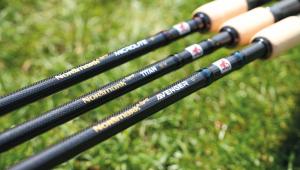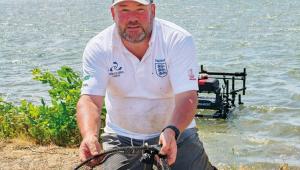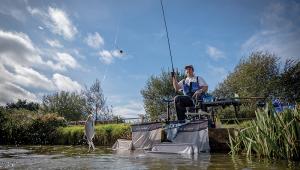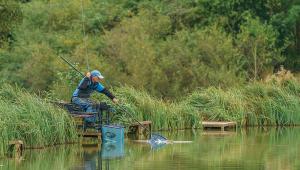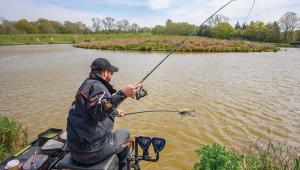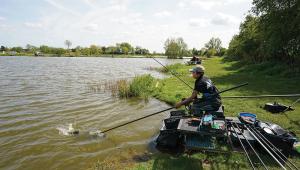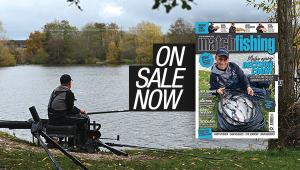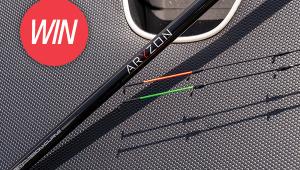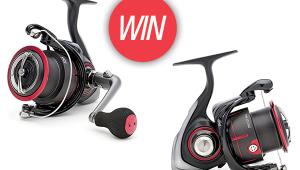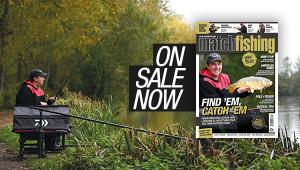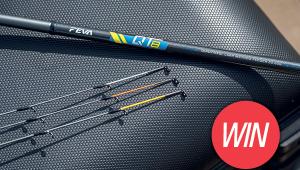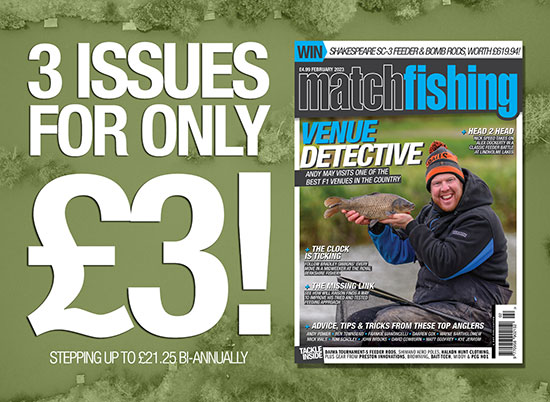The Welland Way
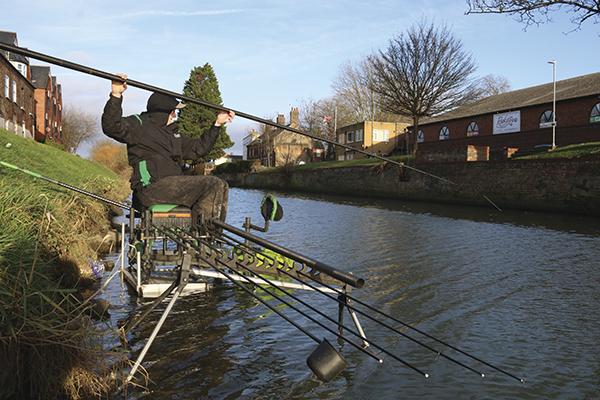
The River Welland in Spalding is one of the many places in the UK where fish migrate to in the winter due to the warmer water in the town; however, this year the free water has been spectacular. Since I started fishing seriously in 2012 at 10 years old, it was always a location that you had to time it within a couple of weeks in the winter to catch well on bread or hemp, and even then you needed to be next to a bridge, on an end peg or opposite the water taxi platform to guarantee great nets of silvers.
This year the combination of continual rainfall and resulting colour in the river has spread the fish throughout the entire system, from the mouth of the Coronation Channel to the sluice, with pleasure anglers regularly catching 40lb-plus nets of roach up to 1lb 8oz, with the average fish being 4oz.
Recent matches have confirmed this with a 49-peg match at the end of December resulting in 1,410lb of fish, an average of 28lb 10oz and 45lb needed to make the top five individuals. That being said, as with any match the best weights came from favoured bridge or end pegs.
Big weights can be caught on conventional groundbait and pinkie techniques; however, by far the best method at this time of year has been breadpunch and bread based. Very recently the colour has started to drop and in my experience this will see better weights coming from those adept at hemp fishing later in the session after fishing bread. The previous heavy colour was just not favourable for hemp as the roach have been focused on the bread and to be honest the average size on bread didn’t require a switch to hemp.
The River Welland can vary in flow and level during a match, with level rises and drops of 14 inches being observed in one session recently. This means anyone attempting to fish the river needs to be prepared with a variety of rigs, setups and approaches, and those that succeed are usually the quickest to pick up the correct rig to suit the conditions at that particular time.
Rigging Up
For hemp fishing, I prefer to use a Carpa Chimp in 4x10 with five No11 shot strung out over the rig. On this is a 0.11mm main line with a 6in 0.09mm hooklength to a size 19 Hayabusa 128, which I have found best due to the speed I can hook the hemp and the size of fish it can handle. I use this at a full top kit length, which helps with depth changes and stops fish splashing too much in the shallow water. I couple this with a No4 elastic and a back shot depending on the wind or skim.
This rig is used to locate where the fish are feeding in your peg, by noting where you get your bites each time you lay the float in. This can make them quicker and easier to catch and can give you a gauge of how to feed and at what depth to set your float. In conjunction with the 4x10, I also use a Chimp in 4x12 with a bulk and three No11 droppers, on the same line, hooklength and hook as before. Again, I use this at a full top kit length but with a heavier No6 elastic. This is a more positive rig and can increase your catch rate once you have got your depth and feeding right by using the light rig.
These floats have a metal stem, meaning that they sit straight and are upright even when the shot are still falling through the water. This keeps the rig straight and, in my opinion, leads to more bites hit. The hollow bristle also gives it an advantage over other floats in the fact that the light shines through them and makes them visible and easy to see against the reflection on the water coming off the far bank, which can be very tricky at this venue.
For my bread fishing I prefer 0.5g and 0.75g cane tipped and carbon stemmed floats shotted with a bulk of No8s and three No10 droppers. This is set up with a No6 elastic and 0.14mm Sensas Feeling main line with a 6in 0.09mm or 0.10mm hooklength to a size 18 B511. This is used with a 24in lash, which allows for the change in water level, while still maintaining a direct connection to the float.
The reason I prefer cane tips for bread is their perfect level of buoyancy. The tips can be fine-tuned perfectly and dotted right down without being pulled under by larger sizes of punched bread or losing sensitivity. I also set up a real bagging rig, which is a 1g Carbon Gloucester or Jean Francois with a bulk of No8s and three No10 droppers incorporated, which can be moved around dependent on the conditions to achieve different presentations. This is set up on a top four with 0.14mm Sensas Feeling main line and a 6in hooklength of 0.10mm to an 18 B511. On this I have found a No4-6 Sensas Hollow Competition elastic to be perfect. It has just enough stretch to cushion the strike yet loads of fish can be swung. Although I do adjust my shotting patterns on my rigs, I tend to change depths or the rig instead to keep in contact with the fish. This allows for more positive bites and a better idea of what’s going on in the peg.
Feeds
I love liquidised bread, but on its own it’s not very heavy. For this reason, I mix it 50:50 with Sensas Punch Crumb, which gives me a very adaptable mix. Squeezing the balls harder or softer regulates how near the bottom they break up. Along with this, adding gravel helps the ball get to the bottom in the flow, and makes sure you know you’re fishing right over the top of your feed.
As a rule, I tend to feed hard balls early in the session then softer as the day goes on. You will soon know if you have fed your bread too soft as you will get lots of silly bites, lifts on the float and you will catch smaller fish. Feed it too hard, particularly later in the day when you have thinned the bulk of the fish out a little, and you will get far fewer bites. I also like to add a bit of loose hemp to my bread mix as an added feed.
As for the hemp I feed and fish with two different sized grains. The feed consists of a small grain, while the hook bait is large hemp pinned; this helps it stand out against the rest of the smaller particles on the bottom. I do however, make sure I feed some of the bigger hemp too, so the fish have seen some of it. It’s all about making your bait stand out but not be too alien.
Main Lines
I normally start by fishing my heaviest bread rig to hand, swinging it out in front of me. This can give a very quick start to a session, and due to it being so close to the bank it still allows for other lines to be opened up and gives me room to chase the fish. Fishing here not only gives you a good gauge of how the venue is going to fish on a given day, but if it turns out to be a red-letter day then you can ease your way straight into bagging mode.
Once this becomes a bit tricky, I add a section but still fish in the same place, which gives me a bit more control but still allows me to land fish without removing a section. This has the efficiency of a traditional whip rig but gives the presentation of a short line. The fact that you have the tip right over your float means that if you were to miss a bite, rather than lifting the whole rig out and laying it completely in again, you can just lower the float back in. Another advantage of using the pole to hand method also allows you to lower the rig down straight, in comparison to the whip in which it falls at an angle. You tend to find therefore that the stamp of fish is larger as you can control the descent of the rig.
At seven to nine sections is where I have my second line, which can be used for either hemp or bread. The exact distance depends on the width and depth. For example, you don’t want to fish too tight to the far bank as it gives nowhere for the fish to back off to, so then in turn they move out of your peg and ultimately you catch less in a five-hour period. Likewise, the ideal depths to look for are between two and a half and three and a half feet; any deeper and you won’t be far enough over to catch any of the fish that have backed off.
I start with all the rigs plumbed up to dead depth as it allows me to read bites well. For example, if you’re missing bites try moving the float up a couple of inches at a time until you start to connect with the fish. You may find that they lie anywhere from a couple of inches to a foot off the bottom.
Feeding Pattern
At the start of the match, I feed one tangerine sized ball of bread with a few grains of hemp in it on the short top-four line and on the long line 125ml of hemp with a small conker sized ball of bread. This draws fish in over the hemp straightaway, and if the hemp wasn’t to work, then you can still fish a piece of breadpunch over the top as a backup.
During the match I cup the bread in again only when the stamp gets smaller, or the fish move out of the feed area, either downstream or off the bottom etc. It has been noticeable this year that the bigger fish tend to hold back upstream from the feed so it is essential you know where your feed bait is reaching the bottom.
Later in the match try the hemp over your long line before you start loose feeding. You can sometimes find that loose feeding can make bites difficult to hit, and the size of fish decreases. However, if like today the fish aren’t responding as well, then loose feeding can draw fish in and hold them in the peg competing and give you a quick positive bite
Special Pegs
Like most venues, pegs around the bridges and end pegs tend to throw up the biggest weights. However, one big factor throughout the stretch is size of fish in the different shoals throughout the venue. This plays a huge role in the final weight achievable as, for example, 200 fish can either be 20lb or 50lb plus.
- Log in or register to post comments
